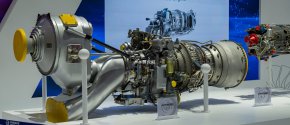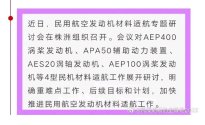It's something Decker Eveleth came up with.Where did you believe that?
You are using an out of date browser. It may not display this or other websites correctly.
You should upgrade or use an alternative browser.
You should upgrade or use an alternative browser.
2025 Victory Day parade thread (workup, 3rd Sept)
- Thread starter Blitzo
- Start date
the reason why AECC introduced AEP-500 turboprop family.IMO, Chinese turboshaft and turboprop still have a long way to go before reaching toptier status. AES100 is stated to have a SFC of 0.276kg/kwh while T901 is stated to have a SFC of under 0.24kg/kwh. It's not a bad engine and can compete with western alternatives although most are modernised/upgraded decade old designs. But since turboshaft/prop often share cores with turbofans and given that Chinese turbofan development is going quite well the situation might change soon but generally turboprop/shaft variants lag behind turbofans in dev time.
aim to replace old WJ-6C in Y-9/8 series and compete with other modern turboprop Engines around the globe. the same engine will power MA-700 regional airliner and upcoming Y-9 family replacement Y-30.

The WJ-6 is based on the AI-20 engine. That was based on the TV-2 engine designed by German engineers in the Stalin era at the Kuznetsov design bureau. It is hopelessly obsolete.
TV-2 was a miracle engine back when designed but this was like 70 years ago.
TV-2 was a miracle engine back when designed but this was like 70 years ago.
Last edited:
Are there any indicators on how good AEP-500 is going to be? I'm sure it'll be competitive against current western offerings but I'm more concerned about how good will it stack up against top American designs similar to T901 with a core based on the latest turbofans, heavy use of CMC and other advanced materials. Will AEP-500 be a holdover from a time where Chinese engine technology are still immature or will it use designs and technology derived from WS-15/WS-19 and maybe even WS-XX VCE.the reason why AECC introduced AEP-500 turboprop family.
aim to replace old WJ-6C in Y-9/8 series and compete with other modern turboprop Engines around the globe. the same engine will power MA-700 regional airliner and upcoming Y-9 family replacement Y-30.
View attachment 156387
Don't expect too much and you won't be disappointed.
I think the current crop of engines were made with the existing material base to make things simple.
I also hoped for a leapfrog but this looks unlikely.
This will however train a new cadre of engine designers and lead to modernized production facilities. So we can have good expectations for the future if they keep up funding for engines.
I think the current crop of engines were made with the existing material base to make things simple.
I also hoped for a leapfrog but this looks unlikely.
This will however train a new cadre of engine designers and lead to modernized production facilities. So we can have good expectations for the future if they keep up funding for engines.
AEP-500 family Material verification and selection begun last year means in 2024.. and i m sure you are well aware of all recent news/research papers posted on Engine thread. where China's material industry currently stands.Are there any indicators on how good AEP-500 is going to be? I'm sure it'll be competitive against current western offerings but I'm more concerned about how good will it stack up against top American designs similar to T901 with a core based on the latest turbofans, heavy use of CMC and other advanced materials. Will AEP-500 be a holdover from a time where Chinese engine technology are still immature or will it use designs and technology derived from WS-15/WS-19 and maybe even WS-XX VCE.
this Turboprop Engine will have latest material available right now in mainland China plus fully automated assembly line..

***************************************************************************************************************************
China's biggest strength is, adaption of next generation manufacturing process. like 3D printed and additive manufacturing techniques. which increased the strength and precision of aerospace material. Zhuhai air show is the biggest example. they have showcase many core components in this regards.
we have few examples here..
China's metal 3D printing, overtaking on the curve
In the domestic metal 3D printing industry, a number of powerful metal powder material manufacturers have emerged:
Farsoon High-Tech will open a new material manufacturing R&D and manufacturing headquarters covering more than 140,000 square meters at the end of 2024, achieving a leap forward in production capacity.
The "EP-M1550 Ultra-large Size Metal Additive Manufacturing System" launched by Yijia 3D in 2023 was recognized as the "first unit in China". The EP-M2050 launched in 2024 was the first in the industry to break the 2-meter limit on three-axis printing size. It is equipped with 36 lasers and 6 matrix modes, compatible with 49 laser and 64 laser capabilities, and has higher molding efficiency.
AVIC Mate, a national-level specialized and innovative "little giant" enterprise, has independently developed the large-scale ultra-high speed "plasma rotating electrode atomization powder making equipment AVI-PREP-4W"; the plasma torch atomization powder making equipment AVI-PA30 was successfully launched on the market, leading the industry in completing industrial upgrades.
View attachment 156153
Willari, a national-level specialized and innovative "little giant" enterprise, focuses on metal powders for additive manufacturing, such as high-temperature alloys, titanium alloys, mold steels and aluminum alloys. The market share of its main products ranks among the top in the industry, and the self-sufficiency rate of high-end intelligent equipment and key components is 100%, reaching the world's leading level.
Ouzhong Technology, a national-level specialized and innovative "little giant" enterprise, has established the first domestic ultra-high speed (30,000rpm) plasma rotating electrode atomization (SS-PREP®) metal spherical powder industrial production line with international advanced level and the first domestic high-temperature alloy powder disk "ultra-high speed PREP powder + hot isostatic pressing HIP" (SS-PREP Disk®) short process production line.
Xi'an Sailon, a national-level specialized and innovative "little giant" enterprise, is the first professional enterprise in China to carry out commercial plasma rotating electrode atomization (PREP) powder making technology, equipment research and development, and industrial application. This year, it successfully launched the first commercial microwave plasma powder making machine in China.
Youyan Powder Materials, which is listed on the Shanghai Stock Exchange Science and Technology Innovation Board, has reached the international advanced level in its 3D printing metal powder material preparation technology as a whole, and some of its technical indicators have reached the international leading level.
FalconTech, China's leading provider of a full range of metal additive manufacturing technology solutions, has provided titanium alloy powders and parts for 3D printing that meet international aviation standards in batches, and is a qualified supplier of metal additive manufacturing parts for COMAC.
With a density of 99.5%, Xikong Intelligent Manufacturing has overcome the EBM molybdenum alloy 3D printing problem
Recently, Xi'an Xikong Intelligent Manufacturing Technology Co., Ltd. has made a major breakthrough in the field of refractory metal additive manufacturing. Its independently developed electron beam additive manufacturing ( EBM) equipment has successfully achieved high-performance precision forming of pure molybdenum materials, overcoming the global problem that has long restricted the engineering application of molybdenum alloys. This technology provides a new solution for the aerospace, nuclear energy and high-temperature industries.
View attachment 156151
Breaking through the bottleneck of the industry: achieving high-density, high-performance molybdenum componentsMolybdenum alloy is an ideal material for extreme environment applications due to its ultra-high melting point (>2600℃), excellent radiation resistance and high temperature stability. However, traditional manufacturing has long faced challenges such as significant low-temperature brittleness, difficult forming, and high welding defect rate, resulting in extremely low yield. Xikong Intelligent Manufacturing has achieved three major breakthroughs through innovative processes:
View attachment 156152
High-density defect-free forming : Using electron beam gradient energy input and dynamic preheating technology to accurately control residual stress and avoid grain boundary cracking, molybdenum alloy parts with a density of more than 99.5% are produced, and the mechanical properties are comparable to traditional forging levels.
Integrated manufacturing of complex structures : For the first time, support-free integrated printing of complex structures such as porous cooling channels and honeycomb sandwiches is achieved, reducing component weight by 40% while significantly improving heat dissipation efficiency.
Stable and reliable performance : The first batch of samples passed rigorous testing and fully meet the requirements of use in harsh environments such as extreme high temperature and strong corrosion.
Just a thought: If the "nuclear" content of the military parade is really high, such as the RF showing a new gen nuclear missiles and the Navy showing the JL-3, then the Air Force has no reason to kepp hiding H-6N with the "Beijing Heavy Hammer". It didn't carry it last parade, but shouldn't be that much of the concerns now
It can even be said the other way around: even if the Rocket Force and Navy do not demonstrate any new nuclear weapon, “Beijing heavy hammer” alone is enough to demonstrate the PLA's nuclear triad capabilities. It still makes sense as a compromise option
It can even be said the other way around: even if the Rocket Force and Navy do not demonstrate any new nuclear weapon, “Beijing heavy hammer” alone is enough to demonstrate the PLA's nuclear triad capabilities. It still makes sense as a compromise option
Last edited:
What's the 99AG? a 99 with APS?Armored vehicle
Fourth gen MBT (Hybrid propulsion, two crew, FCS family concept) and its fire support vehicle (manned? unmanned?)
99AG MBT
Type 05B
Ayi: The first batch of commercial satellite photos of the parade village were cheap photos from Google Earth bought by civilian enthusiasts. The United States has so many think tanks that study China, but these people think that the things that appear in the parade village are "meaningless" or even "not worth news", so no one plans to spend money to go to Maxer or Planet to take a look.
Yeah, these photos are all from early June, and media like TWZ neither wrote articles nor wanted to buy recent photos for further analysis. What's going on?
Yeah, these photos are all from early June, and media like TWZ neither wrote articles nor wanted to buy recent photos for further analysis. What's going on?
I mean why spend the money when they'll all be shown in UHD Ultra 4K quality in like a month or so lmao.Ayi: The first batch of commercial satellite photos of the parade village were cheap photos from Google Earth bought by civilian enthusiasts. The United States has so many think tanks that study China, but these people think that the things that appear in the parade village are "meaningless" or even "not worth news", so no one plans to spend money to go to Maxer or Planet to take a look.
Yeah, these photos are all from early June, and media like TWZ neither wrote articles nor wanted to buy recent photos for further analysis. What's going on?
